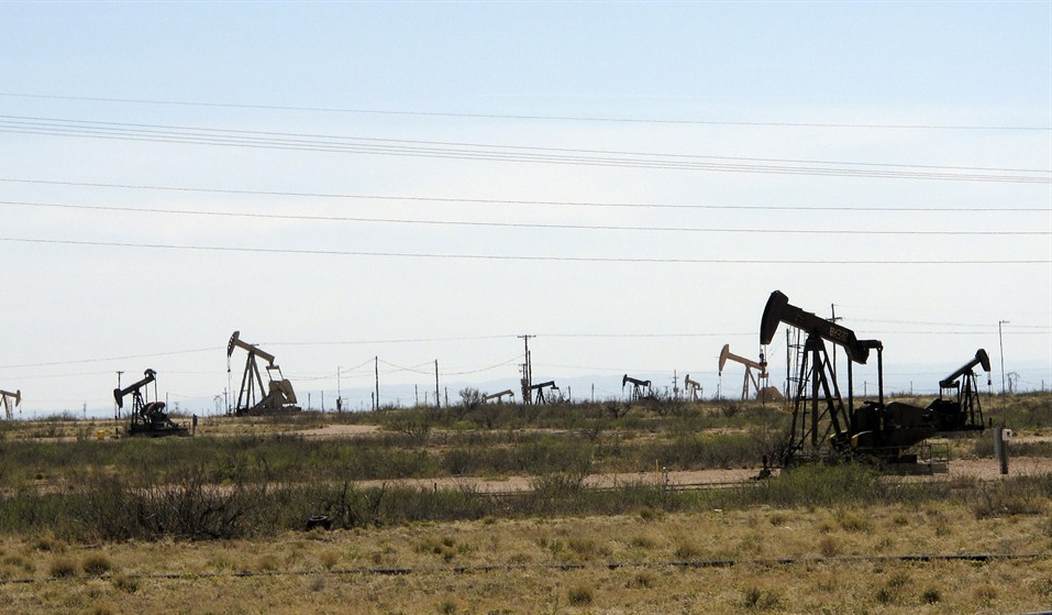There are two things that we know liberals hate almost universally. One is the practice of police deploying robot dogs to help enforce the law. The other is oil drilling or any form of fossil fuel extraction so this news is probably going to have some heads exploding on the left. The world’s first autonomous, robotic oil rig has finished drilling its first well. The oil and gas industry has already adopted robotics and automation into many aspects of the business, but the Nabors Pace-R801 is the first fully functional, land-based rig to move itself onto a promising stretch of an oil field, sit down and start drilling without the hands of any human beings being required. This development has the Houston Chronicle asking, “could robots replace roughnecks?” That sound you hear in the background is Sarah Connor refilling some extended magazines for her rifle.
A new drilling rig put into service by the Houston company Nabors Industries recently completed its first well in the Permian Basin, drilling to a depth of nearly 20,000 feet.
That might not seem like a big deal. But in this case, the task was accomplished without a single worker on the rig floor.
Nabors’ Pace-R801 is the world’s first fully automated land rig, and its introduction in West Texas marks a milestone in the automation of the oil and gas industry. Robots, such as the robotic arm that lifts and connects drill pipe on the new rig, are transforming the industry, promising to save billions of dollars while further shrinking a labor force that has shed tens of thousands of jobs in recent years — particularly oil field laborers.
Describing this rig as “fully automated” is a bit misleading. It’s true that there are no human workers on the rig floor during operations, but there are still remote operators “steering” it into position and kicking off the various phases of the work that are required to actually get the oil flowing. This has both benefits and drawbacks, depending on your perspective. Drilling can be dangerous work in what are sometimes rough conditions. While safety has improved vastly over the years, injuries and accidents still happen. This rig largely eliminates those concerns and workers are less likely to be exposed to any industrial contaminants that could pose health hazards.
The downside to the story is that it also eliminates the need for many of the aforementioned roughnecks. Nabors describes the situation as one where automation “allows workers to focus on other tasks.” The problem is that there aren’t always enough “other tasks” for rig workers to do, so some of them are inevitably being let go. The oil and gas industry has already been shedding significant numbers of jobs, particularly in an era when the government is discouraging domestic oil and gas production while financially propping up wind and solar energy production. Losing jobs to an army of robots isn’t going to help matters.
As I mentioned above, however, the use of robotics was already expanding quite a bit in this industry. Out on the marine rigs in the Gulf of Mexico, robotic “dogs” like the ones made at Boston Dynamics are walking around the rigs. They’ve been specially modified to take readings from gages, sending the data back to remote operators. They also “sniff” for methane leaks or spills. Back on land, some producers in Texas are already using fleets of customized drones to monitor the emission levels of rigs and detect leaks sooner than might otherwise be possible.
The concerns over potential job losses aren’t on the immediate horizon, however. This new generation of robotic rigs is still being evaluated in the field. It will take significant time for the industry to decide to fully move in this direction and then it will take even more time (and money) to replace all of the existing rigs. One analyst posited that it won’t be until at least 2030 that large portions of the market will have made the transition to robotics in this fashion. And there will still be jobs available, particularly in rig maintenance. But some of the operators will have to adapt to more high-tech jobs where they operate the drilling equipment remotely.
Here’s a brief video of the robotic rig in action. You can see how it picks up lengths of drilling pipe, lifts them to the top of the rig, and then manipulates them to prepare to drive into the earth. It’s pretty cool.







Join the conversation as a VIP Member